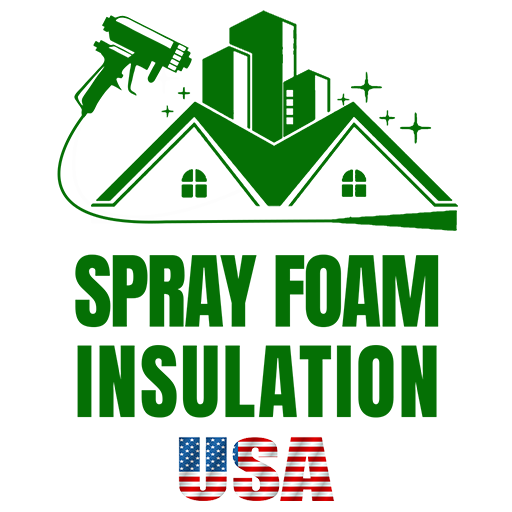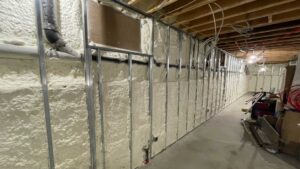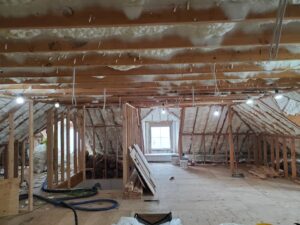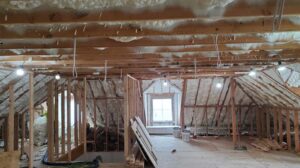Introduction to Insulation R-Value
When you’re delving into insulation for your home, grasping the concept of R-value is crucial. Simply put, the R-value measures an insulation material’s resistance to heat flow. The higher the R-value, the better the material insulates. It’s a way to tell you how well the stuff can keep your place warm during winter chills and cool when summer cranks up the heat. Now, don’t just grab the one with the highest R-value and call it a day. You’ve got to consider your home’s location, its design, and how much moolah you’re willing to part with. The R-value needed for insulation in a chilly northern region won’t be the same as a balmy southern area. It’s all about matching the R-value to your particular situation to make your home comfy and your energy bills less scary.
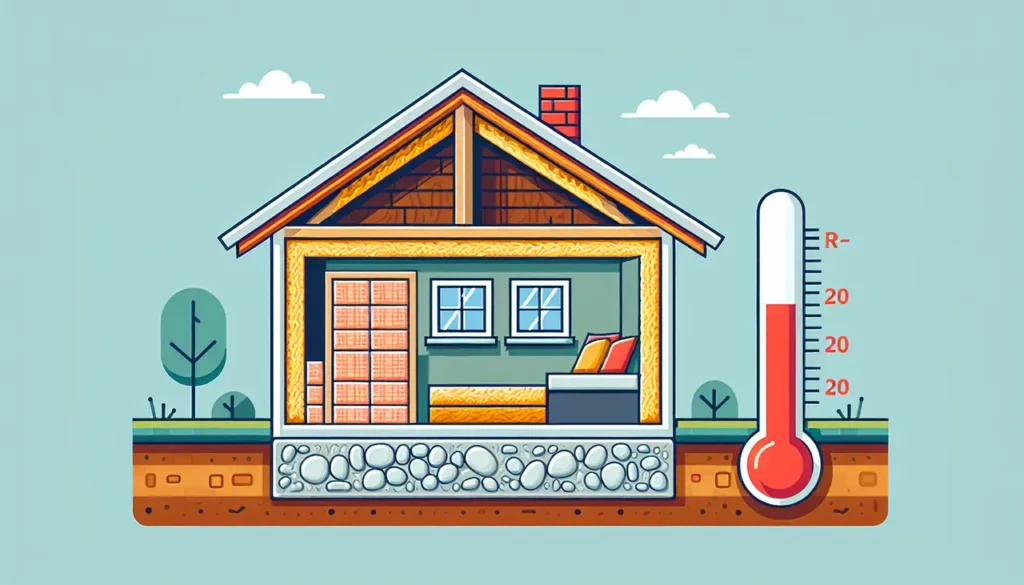
What is Insulation R-Value?
Insulation R-Value measures how well a material resists heat flow, the higher the R-Value, the better the insulation. Think of it as a barrier for your home, keeping the warmth in during winter and the heat out in summer. The R-Value needed can differ based on where you live and how your home is built. For example, colder climates require higher R-Values to maintain comfort and energy efficiency. Common types, like fiberglass or cellulose, have R-Values per inch ranging from about R-2.9 to R-3.8 for loose-fill insulation and R-13 to R-23 for batts. Always aim for the right R-Value instead of just the thickest insulation to keep your home comfortable and your energy bills low.
Why Insulation R-Value Matters for Your Home
Insulation R-value is crucial. It’s a measure of resistance to heat flow through a material. Higher R-values mean better insulation, leading to more comfort and less energy waste in your home. Think of it like a coffee thermos. Just as the thermos keeps the heat from seeping out, insulation with a high R-value prevents your home’s warmth from escaping in the winter or the heat from creeping in during the summer. Paying attention to the R-value when insulating your home means lower utility bills and a cozier living space. It’s not just a numbers game; it’s about having a home that shelters you efficiently from the cold and heat.
How to Determine the Right Insulation R-Value
Choosing the right insulation R-Value is key to energy efficiency in your home. Think of R-Value as the insulation’s superpower—the higher the R-Value, the better it resists heat flow. First, check the recommended R-Values from the US Department of Energy for your area. It depends on your climate; colder spots need higher R-Values. Then, consider where you’ll insulate—attics need higher R-Values than walls. Also, remember, thicker insulation isn’t always better if the space can’t accommodate it. A pro tip: Look for other home areas that might be letting heat escape, like windows and doors, and seal those first. Lastly, consider insulation material, some have higher R-Values per inch than others. Pin down these details, and you’re set to boost your home’s defense against energy loss.
Types of Insulation and Their R-Values
When talking about insulation, the R-value is key – it tells you how well a material can keep heat from passing through it. Let’s break down the common types. First, there’s fiberglass insulation, with an R-value between 2.2 and 4.0 per inch – it’s the fluffy stuff you often see in attics and walls. Then comes cellulose, which is denser and boasts an R-value of 3.1 to 3.8 per inch. Don’t ignore spray foam, there’re two types – open-cell with around 3.5 to 3.6 and closed-cell pushing a hefty 6.0 to 6.5 R-value per inch. And let’s not forget rigid foam boards; they vary widely but typically hover between 4.0 and 6.5 R-value per inch. Last up, mineral wool can either be rock or slag, offering an R-value of 3.0 to 3.3 per inch for rock-based and 2.8 to 3.5 for slag-based. Remember, the higher the R-value, the better the insulation at doing its job. Choose wisely for your home to ensure maximum comfort and energy efficiency.
Factors Affecting Insulation R-Value
The R-Value of insulation tells you how well it can resist heat flow. The higher the R-Value, the better it keeps your home warm in winter and cool in summer. But what affects this R-Value? First, the type of insulation matters — fiberglass, cellulose, foam board, and spray foam all have different R-Values. Thickness also plays a huge role; thicker layers generally mean higher resistance to heat flow. Remember, proper installation is key — gaps reduce effectiveness. Finally, climate affects your needs — colder regions require higher R-Values for optimal energy savings. Keep these in mind when choosing insulation for your home.
Maximizing Your Home's Energy Efficiency with Proper R-Value
To cut through the jargon, think of R-Value as a measure of your insulation’s superpower. The R stands for resistance—to heat flow, that is. Higher the R-Value, the better your insulation can keep the cold on one side and the warmth where you need it. So, here’s the thing, the R-Value you need largely depends on where you live. Living in the chilly north? You’ll want more R power – think R49 or more in your attic. Down south where the sun’s always invited? R30 to R38 could be plenty. And walls, they’re a bit different; typically, they’ll rock an R13 to R21. Now, don’t go cramming the highest R-Value into your space. More isn’t always better. If your insulation can’t breathe, moisture might just crash your comfy home party. Make sure your house is suited for its R-armor. It’s about hitting that efficiency sweet spot – warmth, without wasting your hard-earned cash on energy bills. Remember, quality installation is key. Even the mightiest R-Value falls flat if it’s not put in right. Get a pro to keep things snug. There, you’re now armed with R-Value knowledge; gauge your home’s needs and keep that thermostat in check.
When to Upgrade Your Insulation R-Value
If your energy bills seem high or you’re feeling drafts in your house, it’s time to check your insulation. Insulation R-Value is a measure of resistance to heat flow; the higher the R-Value, the better the thermal performance. You might need an upgrade if:
- Your house is older and has not had insulation updates.
- You’ve made significant changes, like adding a room or new siding.
- The current insulation is damaged, wet, or has degraded over time.
Keep in mind that local building codes often dictate the minimum R-Value needed for new construction, but for optimal energy efficiency, you may want to go above the minimum. Good insulation keeps your home comfortable all year round and can lead to savings on heating and cooling costs.
Installation Tips for Optimal Insulation R-Value
When installing insulation, you want the highest R-Value, which means better thermal resistance. To hit that sweet spot, ensure the insulation fits snugly between joists and studs without compressing it. Overpacking reduces its effectiveness. Watch out for air gaps—these are enemies of insulation. Seal them properly. Also, consider vapor barriers to prevent moisture which can impact R-Value. Lastly, overdoing insulation thickness won’t always up your R-Value; there’s an optimal amount. If unsure, consult a pro to get it just right.
Conclusion: The Long-Term Benefits of Understanding Insulation
Wrapping your head around insulation R-value pays off in the long run. It’s all about getting the best bang for your buck and keeping your home comfy, whether it’s sweltering hot outside or freezing cold. A higher R-value equates to better insulation, which means your heating and cooling system won’t have to work overtime. This translates to lower energy bills and more cash staying in your pocket over time. Plus, you’re doing the planet a solid by reducing your energy usage. In the grand scheme, knowing your stuff about R-value can lead to a cozier home, fatter wallet, and a cleaner environment. Win-win-win.

